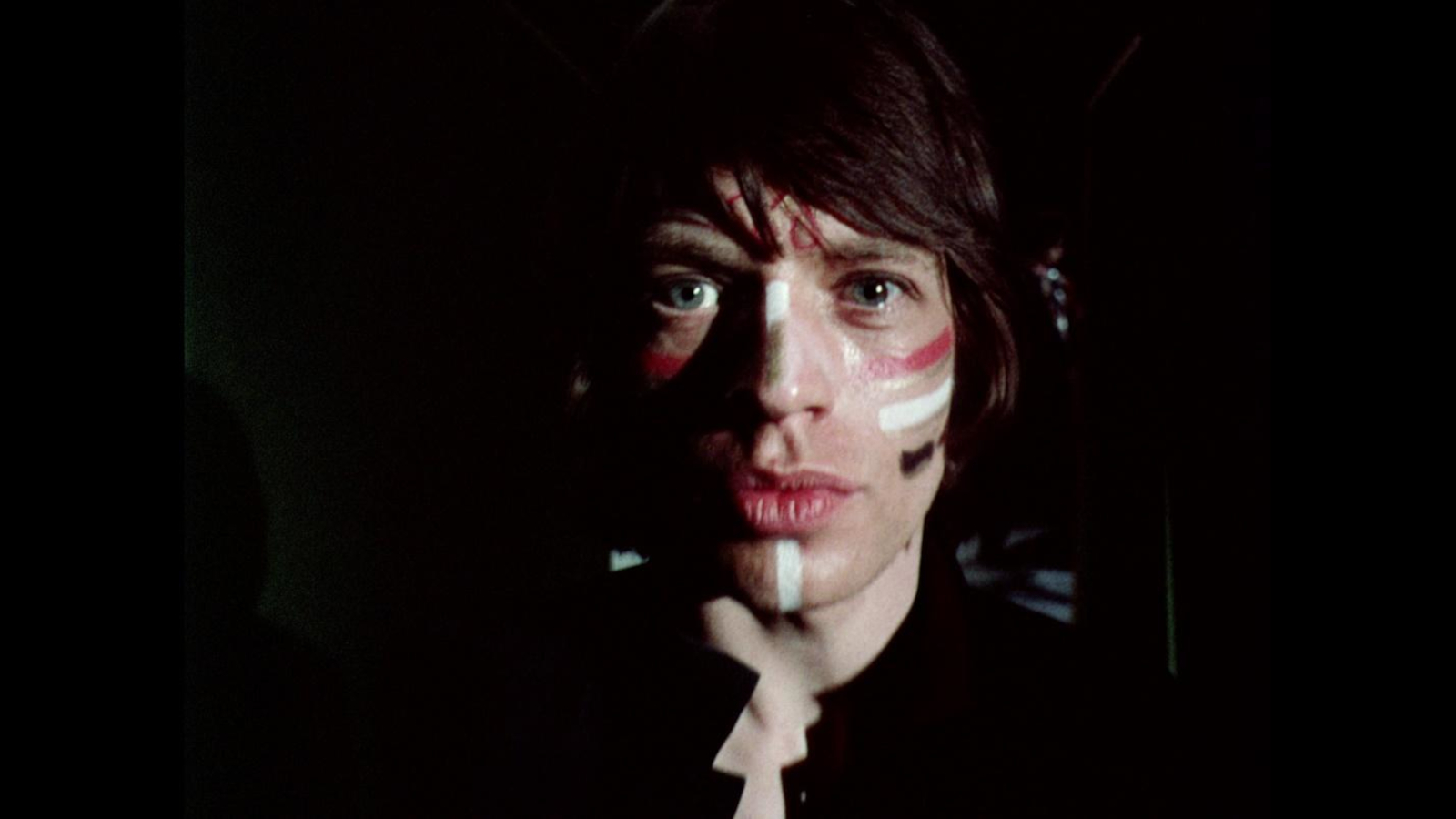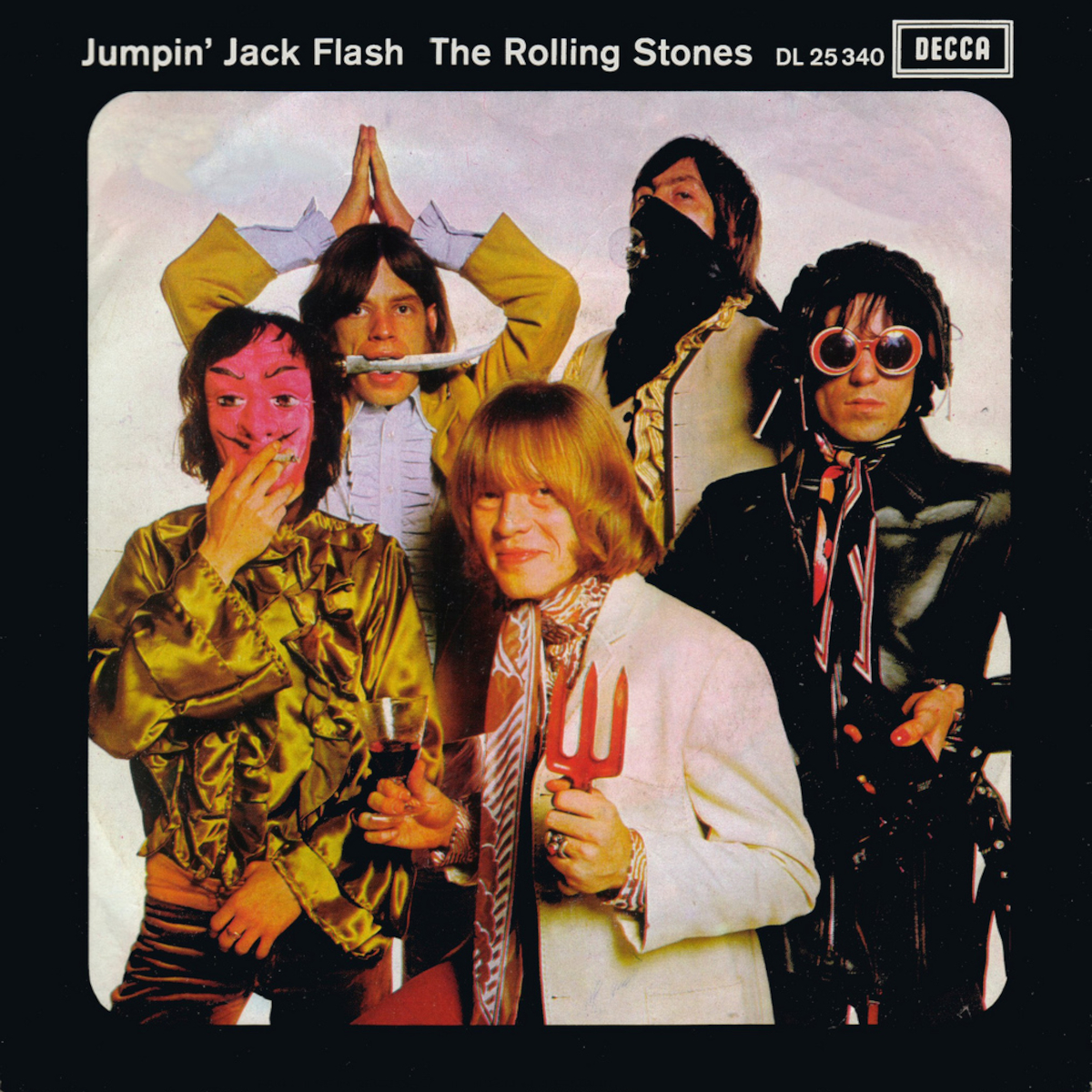Watch the Rolling Stones’ Newly Restored “Jumpin’ Jack Flash” Music Videos
Both versions of director Michael Lindsay-Hogg’s historic “promo” films are now available to enjoy in 4K.

Released in 1968, the Rolling Stones’ “Jumpin’ Jack Flash” single was a top ten hit on both sides of the Atlantic.
Signaling a return to the band’s blues guitar roots, the track has remained a setlist staple for decades.
In spring ’68, just prior to the single’s release, two different music videos were shot in a day's work at London’s Olympic Studios with director Michael Lindsay-Hogg (The Rolling Stones' Rock and Roll Circus, The Beatles' Let It Be.)
One of the films presents a makeup-free Rolling Stones along with a totally unique version of “Jumpin’ Jack Flash,” while the other (notable for the band’s warpaint) features an alternative vocal take dubbed over the single’s backing track.

“We shot the one without the makeup first,” explains Michael Lindsay-Hogg, who first encountered the Rolling Stones while working on the British music TV show Ready Steady Go!
“They were great. As we were doing it, I felt there was an ingredient missing, although at that point I didn’t know what it was. We had a small meal break and I saw Brian Jones sitting by the makeup table and sort of playing with the colors – putting it on his face and then wiping it off – and I thought, Huh. That’s a real interesting look.
“And so I said to Mick, Keith, Charlie and Bill, ‘Just go over there to the makeup table and see what it’s like if you put some stuff on your face – either stripes or eye makeup, or full-face glitter, whatever strikes you.’”
All the latest guitar news, interviews, lessons, reviews, deals and more, direct to your inbox!
Today, the Rolling Stones and ABKCO Music & Records Inc. have released both versions restored in 4K resolution.
According to Lindsay-Hogg, only the most popular bands of the time were making “promo” videos such as this (effectively, the prototype of the music video format that exploded in the early ‘80s with the advent of MTV.) The idea being to provide promotional broadcast material in countries where there were “genuine security issues.”
Recalling his memories of shooting the second version, Lindsay-Hogg said, “The director of photography, Tony Richmond, and I thought there’s another way to light them as well, because it was kind of general performance lighting on the first one we shot in the early afternoon.
In the second version, we shot them in these shadows… And that’s the one they liked best because it had a slightly decadent feel to it
Michael Lindsay-Hogg
“In the second version, we shot them in these shadows. It was much more to do with shadows, and Mick coming in and out of light, and that whole little walk he does at the beginning.
“We put that together, and that’s the one they liked best because it had a slightly decadent feel to it.
“When I edited them and played them back, they loved the videos. I’d hate to think they didn’t, because then I went on to do their videos for 15 years.”
Browse the Rolling Stones catalog here.
Rod Brakes is a music journalist with an expertise in guitars. Having spent many years at the coalface as a guitar dealer and tech, Rod's more recent work as a writer covering artists, industry pros and gear includes contributions for leading publications and websites such as Guitarist, Total Guitar, Guitar World, Guitar Player and MusicRadar in addition to specialist music books, blogs and social media. He is also a lifelong musician.

